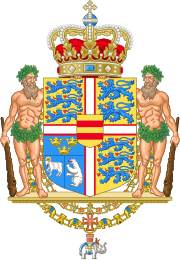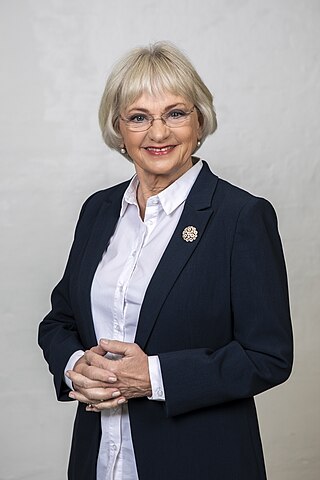
Pia Merete Kjærsgaard is a Danish politician who was Speaker of the Danish Parliament from 2015 to 2019, and former leader of the Danish People's Party.

The prime minister of Denmark is the head of government in the Kingdom of Denmark comprising the three constituent countries: Denmark, Greenland and the Faroe Islands. Before the creation of the modern office, the kingdom did not initially have a head of government separate from its head of state, namely the monarch, in whom the executive authority was vested. The Constitution of 1849 established a constitutional monarchy by limiting the powers of the monarch and creating the office of premierminister. The inaugural holder of the office was Adam Wilhelm Moltke.

The Green Left is a democratic socialist political party in Denmark. It was formerly known in English as the Socialist People's Party, the literal translation of its Danish name.

The Folketing, also known as the Parliament of Denmark or the Danish Parliament in English, is the unicameral national legislature (parliament) of the Kingdom of Denmark—Denmark proper together with the Faroe Islands and Greenland. Established in 1849, until 1953 the Folketing was the lower house of a bicameral parliament, called the Rigsdag; the upper house was the Landsting. It meets in Christiansborg Palace, on the islet of Slotsholmen in central Copenhagen.

The Christian Democrats (KD) are a political party in Denmark. The party was founded in April 1970 as the Christian People's Party to oppose the liberalization of restrictions on pornography and the legalization of abortion. The party renamed itself to its current name in 2003. Originally, the party was not considered part of the European Christian-democratic tradition, and it was better known as a religious conservative party.

Inuit Ataqatigiit is a democratic socialist, separatist political party in Greenland that aims to make Greenland an independent state. The party, founded as a political organisation in 1976, was born out of the increased youth radicalism in Denmark during the 1970s. Traditionally in favour of a socialist economy, the party has been criticised from the left of having gradually moved towards a capitalist approach, supporting a market economy and privatisation. Inuit Ataqatigiit believes that an independent Greenland should be competitive while fighting to keep the environment clean.
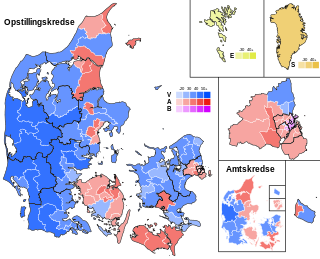
General elections were held in Denmark on 8 February 2005. Prime Minister Anders Fogh Rasmussen's Venstre remained the largest party in the Folketing and his governing coalition with the Conservative People's Party remained intact, with the Danish People's Party providing the parliamentary support needed for the minority government. The Danish Social Liberal Party made the biggest gains of any party, although it remained outside the governing group of parties. The elections marked the second time in a row that the Social Democrats were not the largest party in parliament, a change from most of the 20th century. The Social Democrats lost five seats and leader Mogens Lykketoft resigned immediately after the elections. Voter turnout was 85% in Denmark proper, 73% in the Faroe Islands and 59% in Greenland.

The Constitutional Act of the Realm of Denmark, also known as the Constitutional Act of the Kingdom of Denmark, or simply the Constitution, is the constitution of the Kingdom of Denmark, applying equally in the Realm of Denmark: Denmark proper, Greenland and the Faroe Islands. The first democratic constitution was adopted in 1849, replacing the 1665 absolutist constitution. The current constitution is from 1953. The Constitutional Act has been changed a few times. The wording is general enough to still apply today.

The Danish Realm, officially the Kingdom of Denmark, refers to the area over which the monarch of Denmark is head of state. It consists of metropolitan Denmark—the kingdom's territory in continental Europe and sometimes called "Denmark the proper" —and the realm's two autonomous regions: the Faroe Islands in North Atlantic and Greenland in North America. The relationship between the three parts of the Kingdom is also known as The unity of the Realm.

A constitutional and electoral age referendum was held in Denmark on 28 May 1953. Both proposals were approved by voters, leading to both a new constitution taking effect on 5 June, and the electoral age being lowered from 25 to 23 years, also starting on 5 June. Voter turnout was 59.1% for the constitution question and 57.1% for the voting age question.

A referendum on changing the Danish Act of Succession, the rules governing the succession to the Danish throne, was held in Denmark, the Faroe Islands, and Greenland on 7 June 2009, simultaneously with the election to the European Parliament, in Denmark proper.

Jeppe Sebastian Kofod is a former Danish politician of the Social Democratic Party who served as Minister of Foreign Affairs of Denmark between 27 June 2019 to 15 December 2022.

The politics of Denmark take place within the framework of a parliamentary representative democracy, a constitutional monarchy and a decentralised unitary state in which the monarch of Denmark, King Frederik X, is the head of state. Denmark is a nation state. Danish politics and governance are characterized by a common striving for broad consensus on important issues, within both the political community and society as a whole.
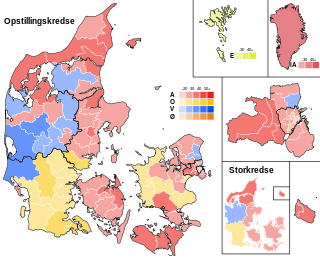
General elections were held in the Kingdom of Denmark on 18 June 2015 to elect the 179 members of the Folketing. 175 members were elected in the Denmark proper, two in the Faroe Islands and two in Greenland. Although the ruling Social Democrats became the largest party in the Folketing and increased their seat count, the opposition Venstre party was able to form a minority government headed by Lars Løkke Rasmussen with the support of the Danish People's Party, the Liberal Alliance and the Conservative People's Party.

Aleqa Hammond is a Greenlandic politician and former member of the Danish Folketing (parliament). Formerly the leader of the Siumut party, she became Greenland's first female prime minister after her party emerged as the largest parliamentary faction in the 2013 elections. In 2014 she stepped down as prime minister and leader of Siumut, following a case of misuse of public funds. She was expelled from Siumut on 23 August 2016 after yet another case of misuse of public funds and became an independent. On 31 March 2018 she announced that she would be running in the 2018 Greenlandic parliamentary election for the Siumut breakaway Nunatta Qitornai.
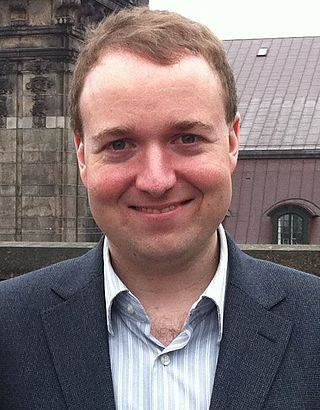
Michael Aastrup Jensen is a Danish politician, who is a member of the Folketing for the Venstre political party. He was elected into parliament at the 2005 Danish general election.

General elections were held in the Kingdom of Denmark on 5 June 2019 to elect all 179 members of the Folketing; 175 in Denmark proper, two in the Faroe Islands and two in Greenland. The elections took place ten days after the European Parliament elections.

General elections were held in the Kingdom of Denmark on 1 November 2022, except in the Faroe Islands, where they were held on 31 October as 1 November was a national day of mourning for victims at sea. Of the 179 members of the Folketing, 175 were elected in Denmark proper, two in the Faroes and two in Greenland. The elections were called on 5 October following an ultimatum to the government by the Social Liberals due to the outcome of a report on the 2020 Danish mink cull by the Mink Commission, which was critical of the government. Voter turnout was 84% in Denmark, 48% in Greenland, and 71% in the Faroes, with a combined turnout of 84% for the realm as a whole.
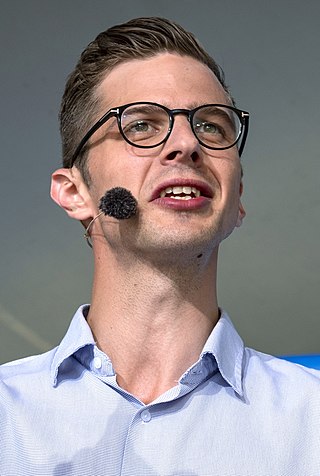
Alex Dominique Kristensen Vanopslagh is a French-born Danish politician. He is a member of the Folketing, and party leader of the Liberal Alliance. He is a former chairman of its youth wing, Liberal Alliance Youth.
The Denmark Democrats is a right-wing populist political party in Denmark. The party was founded in June 2022 by Inger Støjberg, and is officially titled Denmark Democrats – Inger Støjberg. The party is currently in opposition to the second Frederiksen government.
